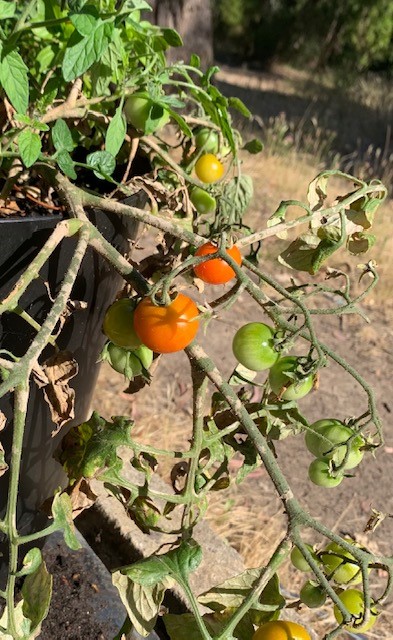The weather conditions associated with La Nina (wet & mild) can also contribute to greater risk of fungal disease.
What fungal diseases affect tomatoes?
- Early Blight
- Damping Off
- Septoria Leaf Spot
- Anthracnose
- Late Blight
- Powdery Mildew
Preventative measures to reduce the risk of fungal disease:
- Plant in full sun.
- Space out to improve airflow.
- Water the soil (avoid getting the leaves wet as much as possible).
Water early in the day so foliage has time to dry before nightfall. Not much you can do about the rain though! - Mulch prevents water splashing back up off the soil.
- Clean up fallen leaves:
don’t compost infected material, home composts are not hot enough to kill fungal spores. - Encourage ladybirds:
Black and yellow ladybirds (Illeis galbula) eat fungus without damaging the leaves. - Bruce’s fortnightly low-toxicity spray program for tomatoes.
Mix:
A few drops of dish soap to emulsify
2 tablespoons of baking soda
1 tablespoon of vegetable oil
4L of water - Sustainable Gardening Australia suggests that regular applications of Seasol or seaweed tonics can reduce fungal issues.
Remember, prevention is better than a cure!
Gentle treatments for fungus infected tomatoes?
- Remove infected foliage to slow the spread and improve airflow.
- Milk spray – mix full cream milk & water in a spray bottle at a ratio of 1:10.
- Copper based spray – you may have some left over if you spray for peach leaf curl
- Apply sprays early in the day to allow the leaves to dry out before nightfall. Early treatment is likely to be more effective than the wait-and-see approach.

